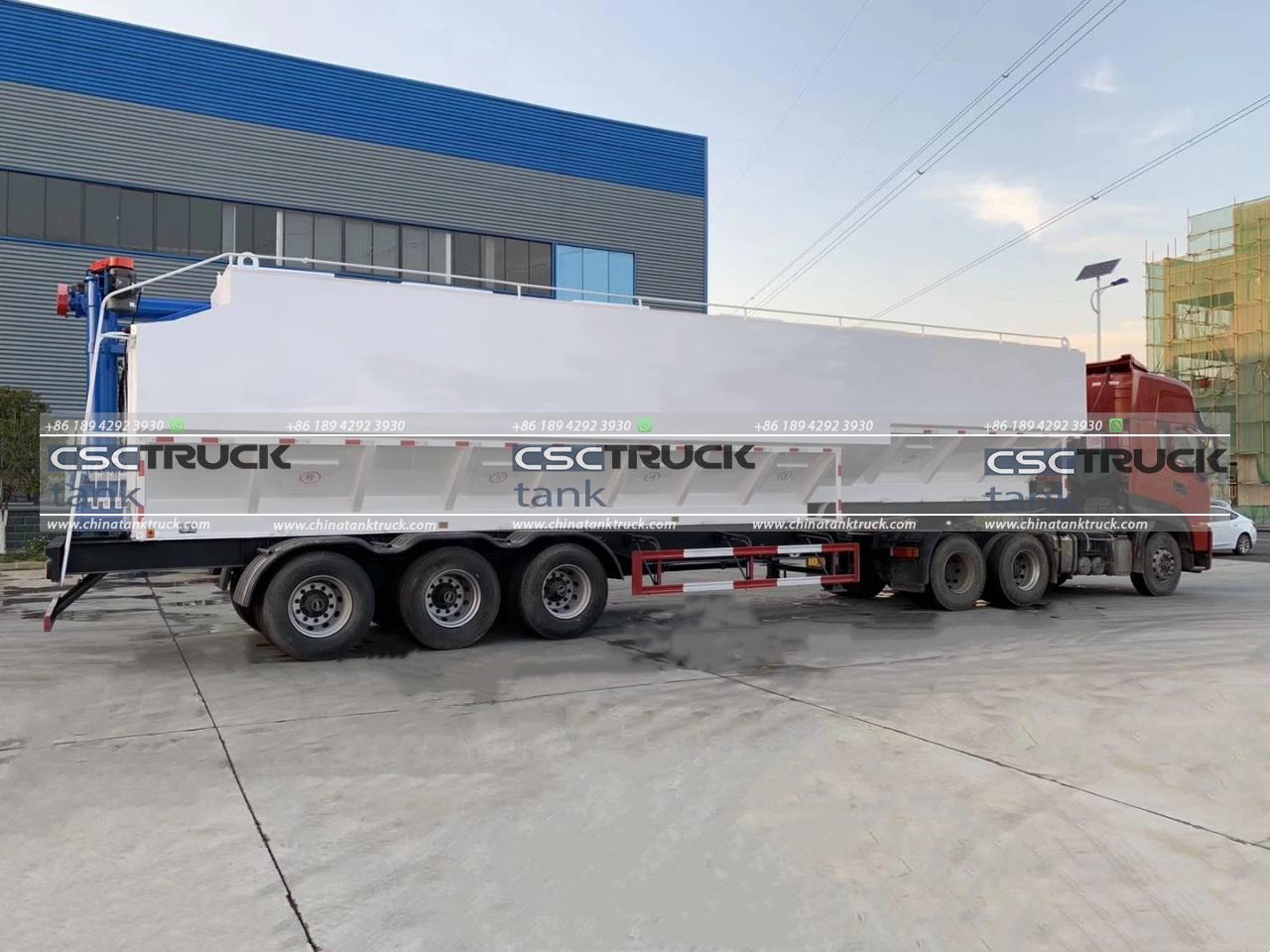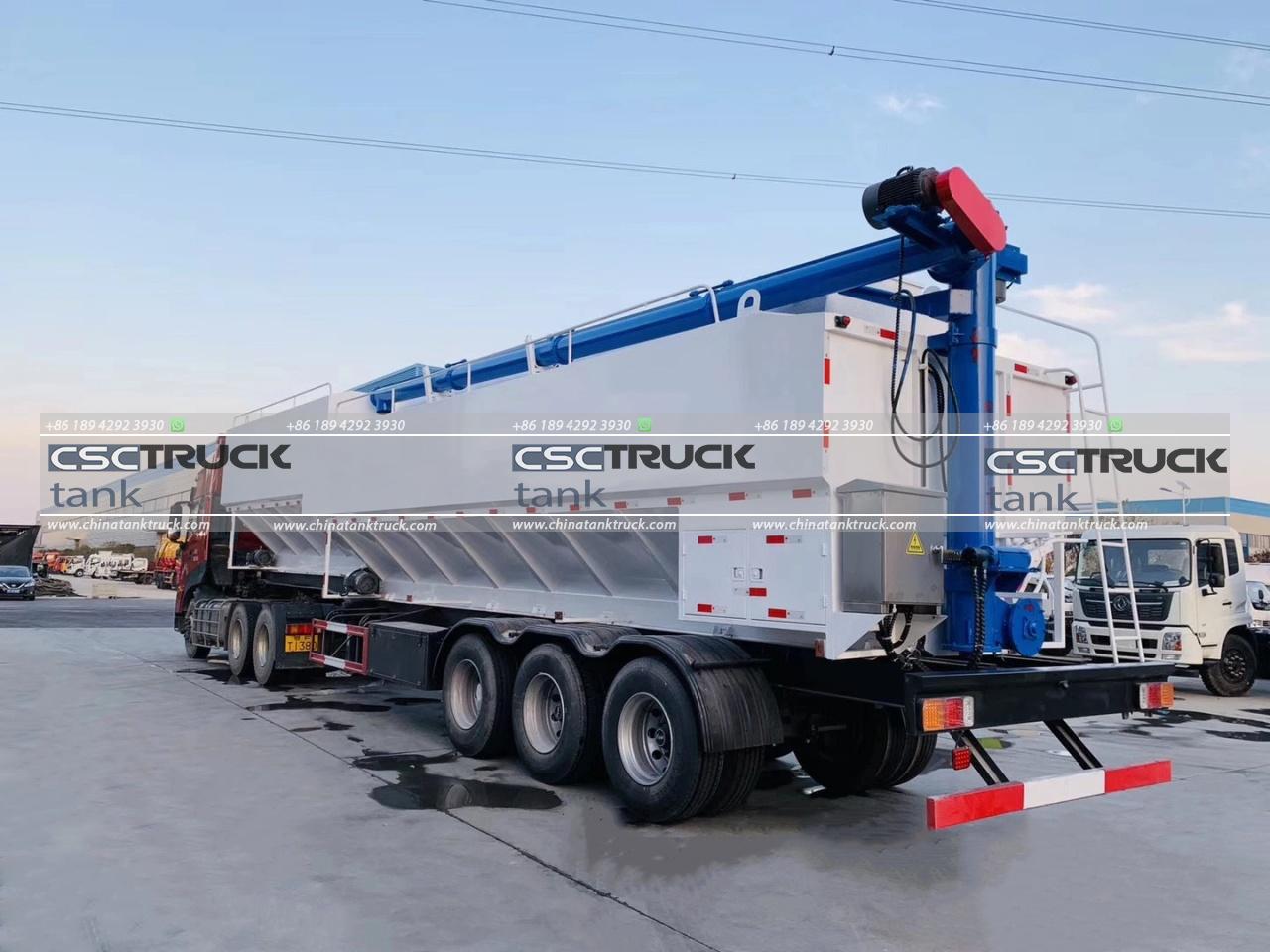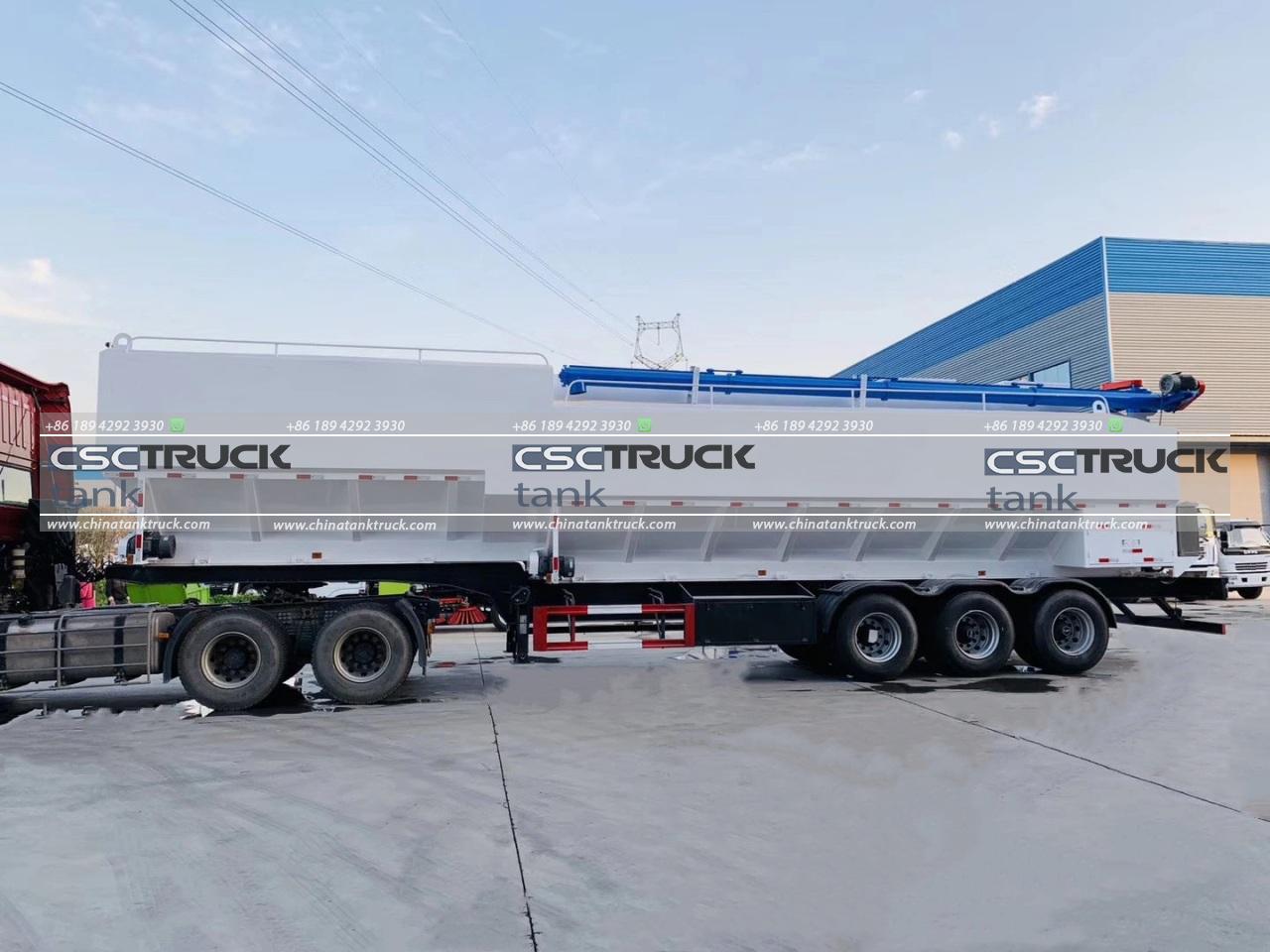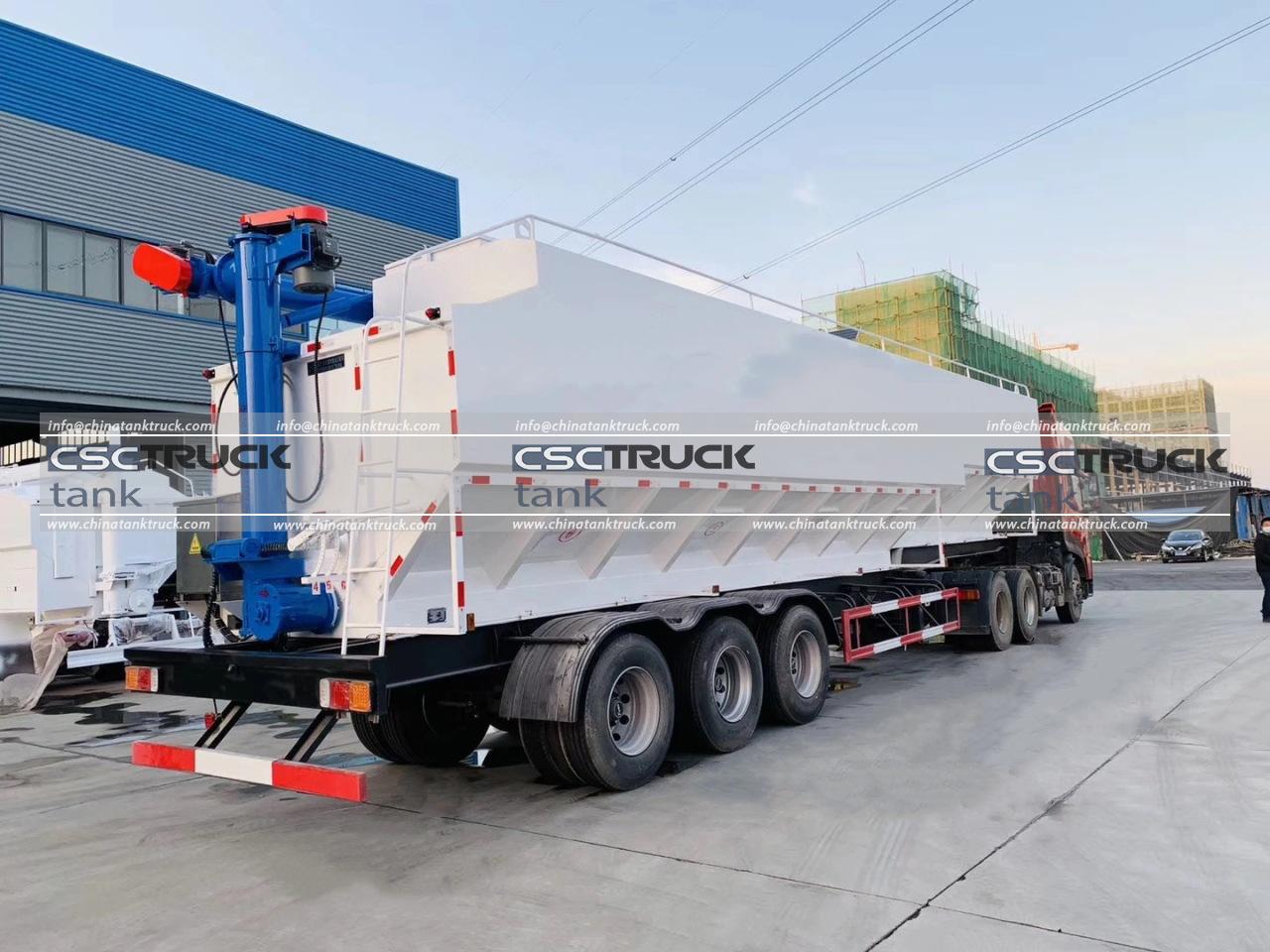What is the Capacity of a Pneumatic Truck?
Pneumatic trucks, also known as pneumatic tankers or bulk tankers, are specialized vehicles designed to transport dry bulk materials such as cement, flour, sand, and other granular or powdery substances. These trucks are crucial in industries like construction, agriculture, and manufacturing, where large quantities of dry bulk materials need to be efficiently and safely moved. One of the most important considerations when selecting or using a pneumatic truck is its capacity. This article explores the factors that influence the capacity of pneumatic trucks and provides a detailed understanding of what capacity means in this context.
Understanding Pneumatic Truck Capacity
The capacity of a pneumatic truck typically refers to the volume of material it can carry, usually measured in cubic meters (m³) or cubic feet (ft³). However, capacity can also refer to the truck’s ability to transport a specific weight of material, measured in tons or kilograms. The capacity of a pneumatic truck is influenced by several factors, including the size and design of the tank, the material being transported, and legal weight limits for road transportation.

1. Tank Volume Capacity
The most straightforward measure of a pneumatic truck’s capacity is its tank volume. This is the total internal space available for holding materials. Pneumatic trucks come in various sizes, with tank volumes typically ranging from 20 cubic meters to 60 cubic meters (700 to 2,100 cubic feet). The choice of tank size depends on the nature of the material being transported and the specific requirements of the operation.
– Small Pneumatic Trucks: These typically have a capacity of 20 to 30 cubic meters (700 to 1,050 cubic feet). They are often used for transporting smaller quantities of materials or for operations where larger trucks would be impractical due to space constraints.
– Medium Pneumatic Trucks: With capacities ranging from 30 to 45 cubic meters (1,050 to 1,600 cubic feet), these trucks are the most commonly used in various industries. They strike a balance between volume and maneuverability, making them suitable for a wide range of applications.
– Large Pneumatic Trucks: These trucks can have tank volumes of up to 60 cubic meters (2,100 cubic feet) or more. They are used for large-scale operations where moving substantial amounts of material in fewer trips is crucial for efficiency.
2. Weight Capacity
While tank volume is a critical factor, the weight capacity of a pneumatic truck is equally important. This capacity is determined by the maximum gross vehicle weight (GVW) allowed by law, which varies by country and region. In many cases, even if a truck’s tank can hold more material by volume, it may be limited by the weight of the material.
– Material Density: Different materials have different densities, which affect how much can be loaded into the truck. For instance, cement is much denser than flour, meaning that a truck filled with cement will reach its weight limit before its volume limit. On the other hand, a lighter material like flour might allow the tank to be filled to its full volume without exceeding weight restrictions.
– Legal Weight Limits: Most countries have strict regulations on the maximum weight a truck can carry, which includes the weight of the vehicle itself, the load, and any additional equipment. In the United States, for example, the federal weight limit for trucks on interstate highways is 80,000 pounds (about 36,287 kilograms). Exceeding these limits can result in fines, penalties, and increased wear and tear on the vehicle.

3. Material-Specific Capacity Considerations
When considering the capacity of a pneumatic truck, it’s essential to factor in the type of material being transported. Each material has unique characteristics that influence how much of it can be loaded into the truck.
– Granular Materials: Materials like sand, gravel, and certain types of grain have relatively high density and low compressibility. This means that the truck’s weight capacity will often be the limiting factor, rather than the volume capacity. These materials also tend to settle, reducing the amount of air between particles and allowing more material to fit into the available space.
– Powdery Materials: Substances like cement, flour, and fly ash are lighter and more compressible. While these materials may fill the tank by volume, they might not reach the truck’s maximum weight capacity. Additionally, because they can be aerated, these materials might expand or shift during transport, which can affect loading and unloading operations.
4. Operational and Design Considerations
Several operational and design factors also play a role in determining the effective capacity of a pneumatic truck.
– Tank Shape and Design: The shape and internal design of the tank can impact how much material it can hold. For example, tanks with a cylindrical shape are common because they are structurally strong and allow for even distribution of material. Some tanks are compartmentalized to carry different materials simultaneously, which can affect the overall capacity.
– Loading and Unloading Mechanisms: Pneumatic trucks use pressurized air to load and unload materials. The efficiency of these systems can influence how much material can be loaded into the truck. For instance, an efficient unloading system may reduce the time required to empty the tank, allowing for quicker turnaround times and potentially more trips in a given period.
– Road and Environmental Conditions: The terrain and environmental conditions can also impact how much material a pneumatic truck can effectively carry. In hilly or uneven terrain, for example, it may be necessary to load less material to ensure stability and safety.

5. Maximizing Pneumatic Truck Capacity
To maximize the capacity and efficiency of a pneumatic truck, operators can take several steps:
– Regular Maintenance: Ensuring that the truck and its pneumatic systems are well-maintained can help prevent issues that could reduce capacity, such as blockages or leaks in the air pressure system.
– Proper Loading Techniques: Using proper loading techniques can help maximize the amount of material that can be safely transported. For example, evenly distributing the load within the tank can prevent imbalances that could reduce capacity or create safety risks.
– Monitoring Legal Limits: Staying informed about and adhering to legal weight limits is crucial. Overloading a truck can lead to fines and damage to the vehicle, reducing its overall lifespan and efficiency.
Conclusion
The capacity of a pneumatic truck is a key factor in its operational efficiency and effectiveness. By understanding the factors that influence capacity—including tank volume, weight limits, material characteristics, and operational considerations—operators can make informed decisions about the best type of pneumatic truck for their needs. Whether transporting dense materials like cement or lighter substances like flour, selecting the right truck with the appropriate capacity is crucial for optimizing performance and ensuring safe, compliant transportation.


